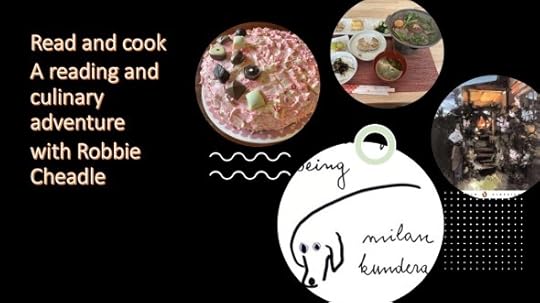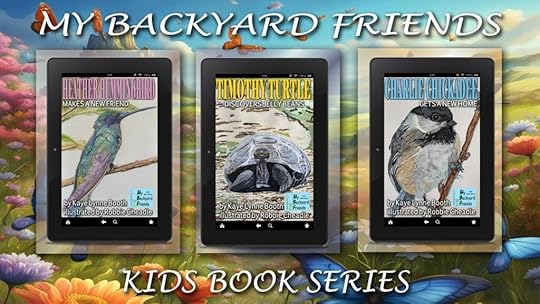Read and Cook with Robbie Cheadle – Ghost Train by Natalie Anna Jacobsen and a Japanese cooking class #Japan #bookreview
 Ghost Train by Natalie Anna Jacobsen
Ghost Train by Natalie Anna Jacobsen
 Picture caption: Cover of Ghost Train by Natalie Anna Jacobsen featuring an old fashioned steam trainWhat Amazon says
Picture caption: Cover of Ghost Train by Natalie Anna Jacobsen featuring an old fashioned steam trainWhat Amazon says“A haunting and immersive read.” – Eva Wong Nava, author of The House of Little Sisters. “With lyrical prose that evokes the mystique of 19th-century Kyoto, this meticulously researched narrative weaves together historical authenticity with the ethereal allure of ‘yokai’ folklore.” – Jake Adelstein, journalist and author of Tokyo Vice and The Last Yakuza
Set in 1877 Kyoto during the early years of the Meiji “Restoration” Era, Ghost Train tells the story of Maru Hosokawa, a samurai daughter who is thrust into a life opposite how she grew up. Her father has surrendered his sword with other samurai, assimilating into a role as a civilian merchant. As his work takes him further and further from home, she is left to find work of her own to help rebuild the family wealth — and protect herself, “just in case,” her father says. But during the summer festivals, ghosts begin appearing before Maru. Unsure of where to turn or who to trust, Maru fends for herself, facing an abusive employer, unreliable friends, and insecurity at home. In the search for answers, a kitsune offers to help in exchange for Maru’s aid in confronting a demon rampaging Kyoto at night. As summer passes on, more ghosts appear, plagues sweep through the city, and a stench of blood in the streets, and rumors of a samurai rebellion obscure reality, driving Maru to make a choice against all instincts, to save herself, her father — and Kyoto. Inspired by true historical events and based on myths of yokai, this story began taking shape first in 2010. With guidance by historians both in Japan and the US, subject matter experts in geisha, kimono, and samurai life, and countless beta readers and supporters, Natalie Jacobsen has carefully crafted this historical fantasy to reflect 19th century life during the tumultuous, society-altering leadership of Emperor Meiji… just with a few more ghosts.
My reviewHaving recently visited Tokyo, Japan, and being exposed for the first time to the concepts of Japanese Yokai and other supernatural beings, this book immediately caught my attention. During my short time in Japan, I also learned a little bit about the coming of the Black Ships to Japan in 1853, which marked the beginning of the end for the Tokugawa shogunate, and the last Shogun. This book, set in Kyoto in 1877 during the Meiji Restoration Era, addresses both of these fascinating aspects of Japanese history and culture.
The story revolves around a young girl, Maru, the daughter of a former-samurai, and her journey to understanding and acceptance of the end of the reign of the samurai and transitioning of her city (and country) into a new era of progress under the ‘young’ emperor.
Maru’s father has gone away, theoretically on ‘business’ and left her in the care of the geiko of an okiya – a traditional geisha house, in the role of shikomi, a junior position to the geiko and maiko of the house. Maru clearly dislikes her new role and is struggling to make the adjustment from the daughter of a former-samurai to her new life having to survive as a woman in a misogynistic, male dominated society where women were either wives, geiko/meiko (entertainer of men) or oiran (prostitute). The fate of women, in the new society under the Emperor, was worst than before and many girls had no option but to resort to prostitution in order to survive. Maru clings to the thin hope that her father will soon come for her and her life will return to how it was in the past.
Maru is traumatised by scenes of death and destruction from the past during the period of the demise of the samurai and daimyo, and has blocked out memories relating to her father and his decisions in order to adapt to her new situation. She is also surrounded by anxiety in the general population as people, especially women, struggled to integrate their superstitions and beliefs of the past with a new society including technology like trains. Maru hears stories about yokai and disappearing girls, and is conflicted about strange metallic smells caused by rain on the new electrical wires and which are reminiscent of blood. Many people believe the train and electrical wires are killing girls and feeding on their blood as well as causing general illness. All of this anguish and mental strain ultimately manifests as visions by Maru of various yokai and also kitsune, foxes that possess paranormal abilities that increase as they get older and wiser. Maru meets a kitsune which has the ability to shapeshift into various forms but which is ‘damaged’ by the new technology and needs her help to survive.
Maru must walk her path alongside her kitsune manifestation to find acceptance of her father’s decisions, her own rejection by her former friends and acceptance of her new life and progress in general.
This is an exciting tale with an abundance of amazing historical information and Japanese folklore woven throughout. There are exciting scenes of conflict and a grand finale which, the way I understood this story, are effectively all part of Maru’s spiritual and mental healing, in other words, in her imagination.
This is a clever and well research story, the history is fascinating, and the folklore mesmerising. It is a complex tale that requires attention throughout and the understanding of Maru’s mental state and internal conflicts for the story to pull together effectively.
An excellent book for people who are interested in Japanese history and folklore. It helps to have some knowledge and understanding of this era of transition and cultural shock in order to best appreciate the historical nuances and information presented.
I wrote this review as a member of Rosie Amber’s book review team. You can find out more about Rosie’s reviews and review team here: https://rosieamber.wordpress.com/.
Purchase Ghost Train from Amazon US here: https://www.amazon.com/Ghost-Train-Natalie-Jacobsen-ebook/dp/B0DHSXH8FM
Cooking Sun TokyoDuring my recent trip to Japan, TC and I attended a 10-course Japanese cooking class. It was great fun and the food was delicious.
The basis of Japanese cooking is dashi stock made with water and 1 – 2 kombu strips (dried kelp seaweed). The cold method for making good dashi stock is simple. Put water into a bottle with the kombu and let it steep overnight.
The dashi is used in all the recipes of which I am sharing two here.
Dashimaki Tamago (rolled egg)Ingredients: 1 egg, 1 TBsp dashi, 1/2 tsp light soy sauce
Method:
In a small bowl, whisk the egg, dashi and light soy sauce.
Heat the prepared Japanese rectangular egg pan after drizzling the pan with a little cooking oil. When its hot, pour half the egg mixture into the pan ensuring the egg covers the full surface. Once the egg is starting to set, use cooking chopsticks to roll the egg to the far end of the pan. Pour the rest of the egg mixture into the pan. Allow it to go under the rolled egg by lifting the roll using the cooking chopsticks. Once the fresh egg mixture sets, roll it up over the previous rolled egg to make a bigger role. Remove from the pan and place on a bamboo mat. Shape the egg roll into a rectangular shape with patterns.
 Picture caption: My egg roll is finished and on the wooden board. TC is cooking his.
Picture caption: My egg roll is finished and on the wooden board. TC is cooking his.
 Picture caption: Both our egg rolls presented with two other dishes.Grilled stuffed lotus roots with chicken
Picture caption: Both our egg rolls presented with two other dishes.Grilled stuffed lotus roots with chickenIngredients: 30 gram portion of lotus root, 30 grams of minced chicken, finally diced Japanese leek, finally diced carrot, a little fresh ginger, 1 tsp sake, sprinkle of salt, 1/2 tsp potato starch, 1 TBsp dashi
Method:
Dice Japanese leek and carrot and mix into chicken mince. Add the grated ginger, sake, salt and potato starch.Powder one side of the lotus root with additional potato starch. Stuff the meat mixture into the lotus root holes and layer the rest of the meat on top of the lotus root.Heat the frying pan and place the lotus root into the pan, meat side down. Cook for approximately 3 minutes. Turn the lotus root over, pour on the dashi and steam in the pan with the lid on for about 5 minutes until cooked. Picture caption: lotus root turned over and dashi added, just before putting the lid on the frying pan.
Picture caption: lotus root turned over and dashi added, just before putting the lid on the frying pan.
 Picture caption: Fully cooked stuffed lotus flowers
Picture caption: Fully cooked stuffed lotus flowers

 Picture caption: TC and I with our final meals.About Robbie Cheadle
Picture caption: TC and I with our final meals.About Robbie Cheadle

South African author and illustrator, Robbie Cheadle, has written and illustrated seventeen children’s books, illustrated a further three children’s books, and written and illustrated three poetry books. Her work has also appeared in poetry and short story anthologies.
Robbie also has two novels and a collection of short stories published under the name of Roberta Eaton Cheadle and has horror, paranormal, and fantasy short stories featured in several anthologies under this name.
You can find Robbie Cheadle’s artwork, fondant and cake artwork, and all her books on her website here: https://www.robbiecheadle.co.za/
_______________________________________
Did you know you can sponsor your favorite blog series or even a single post with an advertisement for your book? Stop by the WtbR Sponsor Page and let me advertise your book, or you can make a donation to Writing to be Read for as little as a cup of coffee, If you’d like to show your support for this author and WordCrafter Press.
_______________________________________
This post is sponsored by the My Backyard Friends Kid’s Book Series and WordCrafter Press .

The My Backyard Friends kid’s book series is inspired by the birds and animals that visit the author Kaye Lynne Booth’s mountain home. Beautiful illustrations by children’s author, poet, and illustrator, Robbie Cheadle, bring the unique voices of the animal characters to life.
Get Your Copy Now.
Heather Hummingbird Makes a New Friend (Ages 3-5): https://books2read.com/MBF-HeatherHummingbird
Timothy Turtle Discovers Jellybeans (Ages 3-5): https://books2read.com/MBF-TimothyTurtle
Charlie Chickadee Gets a New Home (Ages 6-8): https://books2read.com/MBF-CharlieChickadee
Writing to be Read
- Kaye Lynne Booth's profile
- 37 followers



